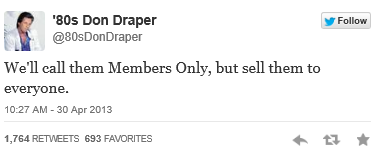Among cloud providers for the enterprise, Microsoft’s offerings are comprehensive. For SharePoint and the rest of their traditional data center solutions, there’s a comparable offering in Office 365 and Azure. Our experience with the SharePoint transition to Office 365 would suggest that IT is preparing for this transformation when the cloud arrives.
Except the cloud isn’t just coming. It’s here. A recent study by 451 Research surveyed 1500 enterprises, and found:
- 68% are moving to hybrid cloud solutions in the next two years
- 52% expect the cloud will enable new business strategies or organizational growth
So, as with all SaaS models, why aren’t people moving faster? Turns out, IT may be the problem.
A colleague sent me an interesting article recently on Office 365. To sum up, Microsoft has been counting on their old, trusted partner, enterprise IT, to spearhead the move from on premises to Office 365. But IT may be reluctant, at best, to shut down on premises servers.
At many conferences, I’ve heard a lot classic IT Pros wonder “what will the cloud mean for my career?” It’s a fair question.
Side Note #1
First, can we call it off-premises? Get tired of saying “cloud”. SaaS, PaaS, IaaS are also alienating acronyms (Software-as-a-service, platform-as-a-service, infrastructure-as-a-service).
The postmodern datacenter is going to look very different in ten years. What’s going to be inside?
- Authentication/security and domain servers
- Large databases and file archives
- Proprietary technologies and highly sensitive data
- “Hoteling” systems to make working from the office as seamless as working at home (automatic redirection of phone calls to extensions
- Manufacturing / control systems where proximity matters
- Networking and Wi-Fi
- “Beachhead” systems that act as aggregated gateways between internal information and external services.
Plus a LOT of BYOD smartphones and tablets alongside laptops and desktops. Leaving a LOT in the cloud. CRM, communication, collaboration, databases, files – all likely to live predominantly or exclusively in virtualized data centers. The on-premises data center will still exist – but it will be different, and smaller. Expect less server maintenance, but more security and networking.
Why? The biggest reason is because providers – cloud providers – think about SERVICES, not servers. They provide sales management applications – not just software to integrate into a data center. In many cases, what drives the decision is a business transaction. “You mean I can start using your CRM system today with just a credit card”? Traditional IT usually offers 3-6 month lead times on similar requests.
And it’s never going to be practical for even the largest enterprises to build in the kind of burstable internal capacity that would allow someone to requisition and enable a brand new database-centric web application with a 5 minute SLA.
Microsoft tends to dominate a lot of business cloud discussions, because Azure, Yammer, and Office 365 tend to parallel well established data center traditions of Windows, Outlook, and SharePoint. But business software directions are increasingly looking like consumer purchases. When non-technical stakeholders make decisions, they tend to favor ease of use, ease of purchase, and quick paths to value. Traditional IT concerns like integration and security don’t get as much as attention (and they should.)
So business discussions, and business value are going to drive cloud migration. Can IT block it? Yes, for a short time. But the move will be inexorable. Blocking the cloud now means losing the ability to shape it next year.
So what’s an IT Pro to do? Look to the world of fashion.
On premises vs. cloud – clothing and style
Yes, I’m going back to the shopping mall for analogies. We’re on our third decade of being able to buy apparel on the Internet. Most vendors and retailers have state of the art web sites that offer far more choice of size, fabrics, and fashion than can be stuffed into the local retail outlet. So bricks and mortar is dead, right?
Absolutely not. Shopping for clothes on premises can offer some intrinsic advantages:
- Immediate access to product
- Testing, seeing, trying out clothes before purchase
- Live guidance
- The chance to find things you didn’t know about
But it’s the intangibles that rule the day, especially customer service. If you need to purchase an item in store and have it shipped, or purchase online and return to a store, no problem. If you want to feel included, special, getting something ahead of everyone else, the best stores handle this.
Side Note #2
If you follow the Reagan Era/Mad mashup on Twitter @80sDonDraper you may have found this gem:
Any day, you can visit Amazon.com, Target, and eBay on line and find thousands of articles of clothing. All sizes, prices, and style are available. However, unless you already know what you need, the range of choices is truly overwhelming.
On the other hand, retailers like Nordstrom’s and J. Crew have won kudos for their in store experience. Not that those merchandisers don’t have fantastic websites too. But these are among the newer breed of merchandising where each store offers a carefully curated experience. Only the best in house and third party brands are selected. Consultants (on floor sales staff) are available to guide particular requests and offer impeccable customer service, backed up by electronic fulfillment in the rare case that customer service request can’t be fulfilled instantly.
J Crew, for years only offered “house brands” – J’ Crew’s own proprietary product. However, they’ve moved recently to augment their product lines selectively with carefully selected, complementary products. (See http://mashable.com/2012/01/18/curated-commerce-marketing/ for more).
These stores use expertise gleaned from cloud services like Pinterest to drive brand new in store experiences. For example, Nordstrom uses selected portions of Pinterest in store to help shoppers identify new product interests. In the end, they don’t promise you access to everything. They promise a guide to precisely what you need.
And that’s a great model for how to embrace the cloud. It’s here. Neiman Marcus wouldn’t dream of telling shoppers for an out of stock item to just keep coming back until the item is delivered – they’d use the cloud top deliver the clothing services alongside their in person guidance.
Why be a clothing “integrator”? Because it works. Target has recently introduced popup mini boutiques from other local brands in many stores. It’s sales were up 6% for the past year, in the face of an eye-popping 65% decline overall in retail since 2000, according to Kantar Retail and the U.S. Department of Commerce.
To sum up, the key elements of on premises retail centers in the cloud world:
- Clean, efficient, streamlined experience
- Top notch expertise
- Bespoke, curated guide to what’s available
- Unified experience between on-premises and cloud fulfillment
What this all means for IT
IT needs to see itself not as the creator of all possible technical services. Instead, they do best as the just in time assembler and deliverer of hand selected technology.
I recognize that this is far from the first article to suggest that IT should be business focused and service oriented. But what does this mean in the cloud era? Especially as Microsoft moves so aggressively into the space?
Just remember that solutions architectures aren’t as simple as they sound. Even looking at Microsoft alone – there are multiple flavors of Office 365, along with multiple tiers of a la carte Exchange, SharePoint and Lync. Services vary widely among all of these. Will your social collaboration use Yammer? SharePoint? Chatter? How about line of business data – on premises or Azure SQL? How best to offer your users a simple sign-in without running completely separate password systems for AD, Azure, Office 365, Yammer – plus all the other cloud services they need (or think they need?)
You can’t fight the tide. You may choose to lead your users to the future, and help shape the role for technology, or wait until they abandon your legacy services and move somewhere else.
Remember the cloud is not your enemy. Designing and building technical physical infrastructure has been part of IT for a while. But there are many more high value opportunities to enhance the business value (profits, velocity, cost savings, growth, and employee maintenance) without retreating to the server room 40 hours weekly.
You are not out of a career. There are more providers than ever, with solutions that span platforms (e.g. Office 365), infrastructure (Amazon AWS), and services (Dropbox), applications (SalesForce.com) and on, and on. (Too many examples to list here.) That’s actually a lot more complexity than “just” running your own servers. Each offers different operating characteristics that make them ideal for one customer and less so for others. If you’re used to integrating on premises systems alone, this should be fun! Who best to drive this change? You.
A few simple rules:
- Know the landscape. Offer guidance on what to use and what to avoid. Stay current on all offerings – not just Office 365 — the way you follow security bulletins and patches.
- Be the expert in the nuances of all systems you support, on premises and off premises. Be the best at the cloud services you use. Every system has secret tips and tricks only know to insiders. For example, Microsoft offers a mobile app (Authenticator) to generate SkyDrive registration codes for BYOD devices that may not have access to email. But that’s not common knowledge.
- Narrow the options. There are too many “consumer” cloud services out there. For example, dumping your mobile users to a vast, unregulated Android Marketplace isn’t great service. Hosting an enterprise app catalog of the 20-30 most useful apps for mobile devices is a huge win.
- Make the on premises experience flawless. Fast, and service oriented. Understand the technical trends that similar business users adopt to anticipate demand.
Conclusion…
Don’t just make on premises better. Make the cloud better. If people stop asking for cloud access, it doesn’t mean they gave up on the cloud. Maybe they just gave up on IT.
You have a choice. You’re uniquely qualified to help figure out the right mix of cloud services. And how to use them once you have them. Or you can avoid the topic, and be asked to integrate someone else’s cloud purchase. Lead, follow, or get out of the way.


